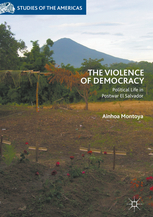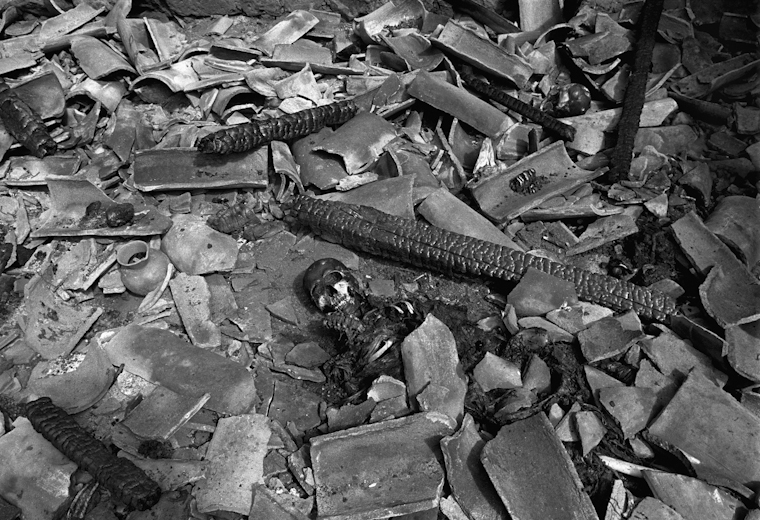Book review
The Violence of Democracy – Political Life in Postwar El Salvador

By: Ainhoa Montoya
Published: 2018, Palgrave Macmillan, 303 pp, £17.99 paperback, £13.99 e-book. You can order a copy here.
Reviewed by: Mogs Russell
It’s been almost 30 years since the signing of the Peace Accords which signalled the end of a bloody Civil War, but Salvadorean society is still marked by huge levels of fear, insecurity and murder. In The Violence of Democracy – Political Life in Postwar El Salvador, Ainhoa Montoya argues that while recent gang crimes involving extortion and murder have hit the media headlines, they are only a part of the picture and that there are other, more complex and deep-seated factors to take into account, such as unresolved pre-war and wartime issues, and, crucially, the very nature of the post-war democracy established in the 1990s.
One of the strengths of this book is Montoya’s knowledge of El Salvador’s politics, history and culture, and the extensive research she has undertaken. Between 2008 and 2014 in Santiago Nonualco, La Paz, she interviewed people from across the political spectrum, of different ages and gender, both urban and rural, and of different religious sensibilities. Drawing on first-hand accounts of people’s experiences, backed up by broad academic research in a range of relevant fields, she provided compelling evidence for her arguments.
I was particularly struck by the analysis of how the post war democracy, established after the signing of the Peace Accords, has in many ways made very little difference in terms of violence in people’s lives. She argues that the transition to a neoliberal democracy which left the old ruling elite in power, means that the structural inequalities, poverty, nepotism, corruption and lawlessness of the pre-war and war time eras are still in place. In addition, the rise of gang violence which is constantly presented in the media as something separate from, rather than part and parcel of the state’s laissez faire approach and failure to address key issues, has led to the burgeoning of a private security industry, owned and controlled in the main part by the ruling elite, and which few poor people can afford. This, she says, raises ethical and political issues as ‘the industry has a vested interest in the persistence of public insecurity and the sort of inequalities that develops when physical security becomes a privilege’. As a result, people live in a state of stress and chronic fear, similar to that of the past.
That summary does not do justice to a book which deals with a whole range of fascinating ideas. To give just a few examples: looking at democracy as both a historical stage and a political form; the use of rumour as an indication of violence; the complex nature of memory work, and the paradoxical relationship poor people have with the state. Montoya clearly has a keen, inquiring mind and she explores these ideas with enthusiasm and in detail.
But while I foundthe book fascinating and learnt a great deal, I have to admit it was hard going at times. It was partly due to the dense language, which although normal for an academic work like this, can be daunting and, for me at least, required a lot of effort. That may be just me, however.
But my main difficulty was dealing with the sheer volume of material and the range of the book. To give one example, there was a lot of background on Monseñor Romero, Liberation Theology, Memory work, and comparing different models of citizenship, and while none of this is irrelevant, the sheer amount of detail on each of these aspects (and others) led to my focus being taken elsewhere on occasion and made it difficult to keep track of the key issues. Also a conclusion that introduces new quotes and references, followed by an epilogue that runs to nearly 16 pages and includes much detail what both the post war ARENA and FMLN governments did while they were in power, and a whole section on the experience of Salvadoreans seeking asylum in the UK were a bit overwhelming and left me feeling there were several books here, not just one.
However, while this is a demanding book and perhaps not one for a general reader, it is clearly a thorough, intensely researched, authoritative piece of work on post war El Salvador. It examines in detail and with a critical eye political developments over the past 30 years, and analyses honestly and forensically the impact they have had on Salvadorean society in a way which is thought-provoking and insightful.
Main image: El Mozote, Morazán, El Salvador, 1982. Site of the worst massacre of the civil war, when soldiers of the Atlacatl Batallion arrived in the village, and massacred at least 393 people there and a further 401 in surrounding communities. Photo: Susan Meiselas

